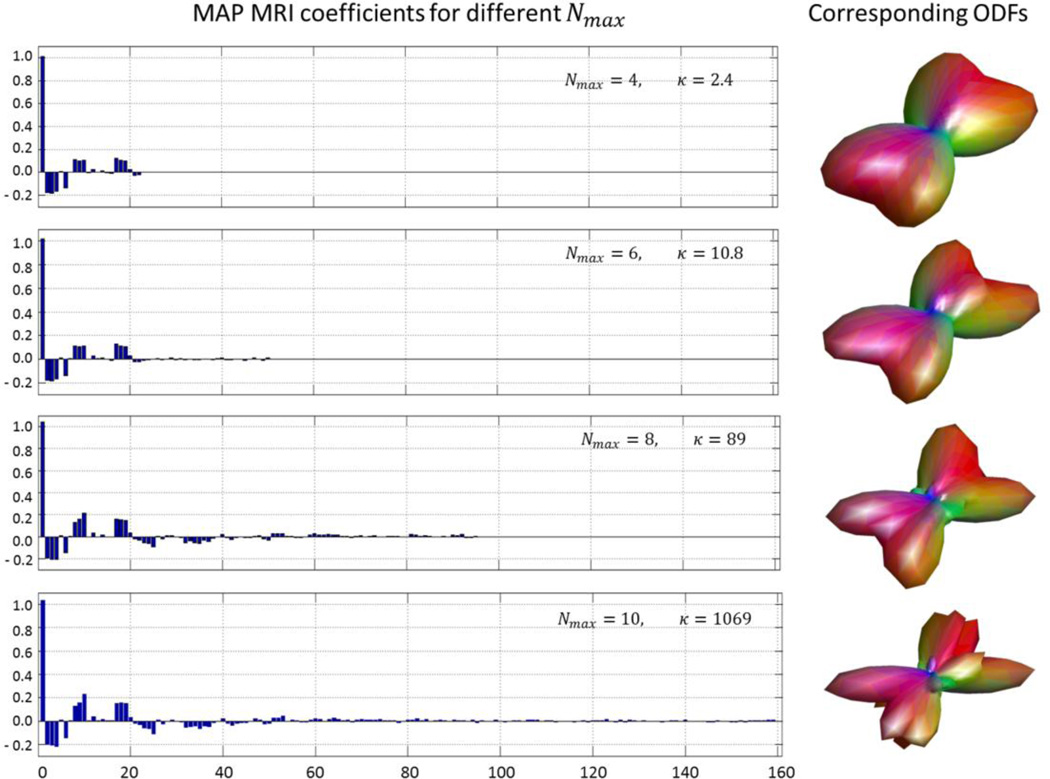Figure 1.
MAP MRI reconstructions using different series truncation orders Nmax for a representative voxel containing complex WM microstructure. Left panel: Magnitude of MAP MRI coefficients computed with Nmax = 4, 6, 8, and 10 (corresponding to 22, 50, 95, and 161 coefficients, respectively). Right panel: corresponding diffusion orientation distribution functions (ODF). Due to the orthogonality of the MAP MRI basis functions, low-order coefficients do not change as the truncation order is successively increased, despite increasing condition number κ at larger.

